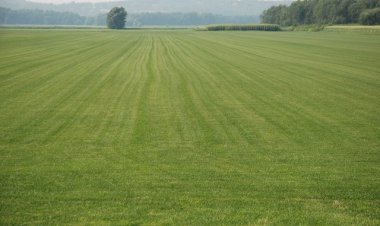How to Use the 7 Elements of Interior Design to Decorate Your Home
The goal of interior design is to manage the space better and be creative with the unused space of a home. The following...

Interior design is a process that provides its customers with a unique set of aesthetically pleasing but efficient solutions for better use of the space in question. The goal of interior design is to manage the space better and be creative with the unused space of a home. These elements include the following:
1. Space
The essence of why interior design happens is “space”. As mentioned earlier, the aim is to manage the space better. We have two types of space: 1) Negative space and 2) Positive space.
Negative Space: This is the “open” space that makes the room feel empty.
Positive Space: On the other hand, this space consists of décors such as the living room, dining table, and kitchen.
In space, concepts such as ceilings, tiles, furniture quality, and walls are creatively considered and the interior design plan is utilized. The balance between the “negative” space and “positive” space is being unique and creative with the interior design of your home.
2. Lines
Leading lines will shift our attention to how the interior design has been mapped out from the arrangement of the furniture to the shape of a spiral staircase. There are three types of lines:
a) Horizontal
b) Vertical
c) Dynamic
The intersection where the wall meets the floor is a horizontal line. Here, the paint color of the home could vary. Vertical lines will play a huge role in how the design of portraits in your house has been mounted or framed.
This is very important especially if the portrait photo was shot in the landscape. Additionally, vertical lines have been used in ceilings. Dynamic lines such as diagonal, curved, or zigzag help us identify how creative the wall patterns could look.
3. Form or Shape
It is imperative that the interior designer understand the homeowners’ style. The shapes include angular or natural (curved). Natural shapes cover the appearance of the furniture. For example, the priority is in how the furniture will be used over how it looks.
While adhering to creative forms or shapes, the goal is to have a variety of how a home will “feel”. The feel of the home includes earthy, modern, cool, or warm. The shape of the furniture, and the overall décor should be aesthetically pleasing and not “confusing”.
4. Pattern
In interior design, the patterns are in areas such as tiles, ceilings, walls, and pillows. The patterns of your walls can be different from the ceilings or tiles. Bold patterns shouldn’t be intimidating to the visitors. Patterns offer repetitive elements or design that produces a colorful effect. Additionally, patterns offer depth to space that strikes attention at first glance.
5. Light
The importance of lighting in rooms can’t be emphasized enough. With the wrong house lighting and the mood completely changes. Natural light applies to the size of windows. Furthermore, this light applies to houses with balconies, rooftops and house porch. Natural lighting is also known as daylighting. In the same vein, natural light saves energy.
We have three types of artificial lighting. Artificial lighting complements natural light. These include:
a) Task lighting: This lighting helps accomplish normal household tasks.
b) Accent lighting: This light encompasses art pieces, sculptures, chandeliers and mounted photos on the wall.
c) Ambient lighting: Ambient lighting focuses more on how to create a certain mood in areas such as the living room.
6. Colour
Houses are painted to inspire a mood and create a feeling. The small details about colors when done effectively will make homes have an aesthetic beauty. Paint colors in homes indicate the mood of the living room, the character of the homeowners, the message the colours tell vividly, and how the interior designers match the chosen colors. With the right colours, the desired feeling is felt.
7. Texture
Texture encompasses design appearance, look and feel. Great interior designers ensure the texture used creates the desired effect. The two types of texture include: actual texture and visual texture.
Actual texture- Actual texture incorporates the roughness or smoothness of leather seats, sofas, and general furniture appearance. Interestingly, what appears smooth might have a totally different feel such as silk or crisp.
Visual texture- Visual texture is the perception of how a texture feels through sight and more so our judgment of the texture through the sense of touch. Visual texture helps us appreciate the appearance of the physical texture. The texture of the tiles can have a comfortable feel on the feet while the wall texture strikes a different pattern of the mood of the home.
Finally, uniformity in texture is colorful in design while difference in texture is creative.
High-quality interior design should transform a home into a beautiful residence while ensuring it’s not overdone to be too confusing or less done to have a boring “feel’. Design the home creatively and aesthetically.
If you have a real estate press release or any other information that you would like featured on African Real Estate Blog Post do reach out to us via email at [email protected]






























![7 Famous Architectures in Africa [PHOTOS]](https://realestateblogpost.com/uploads/images/2023/05/image_380x226_646c9c2bd8642.jpg)



